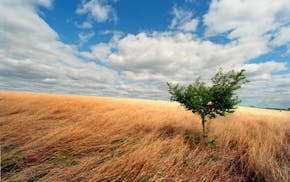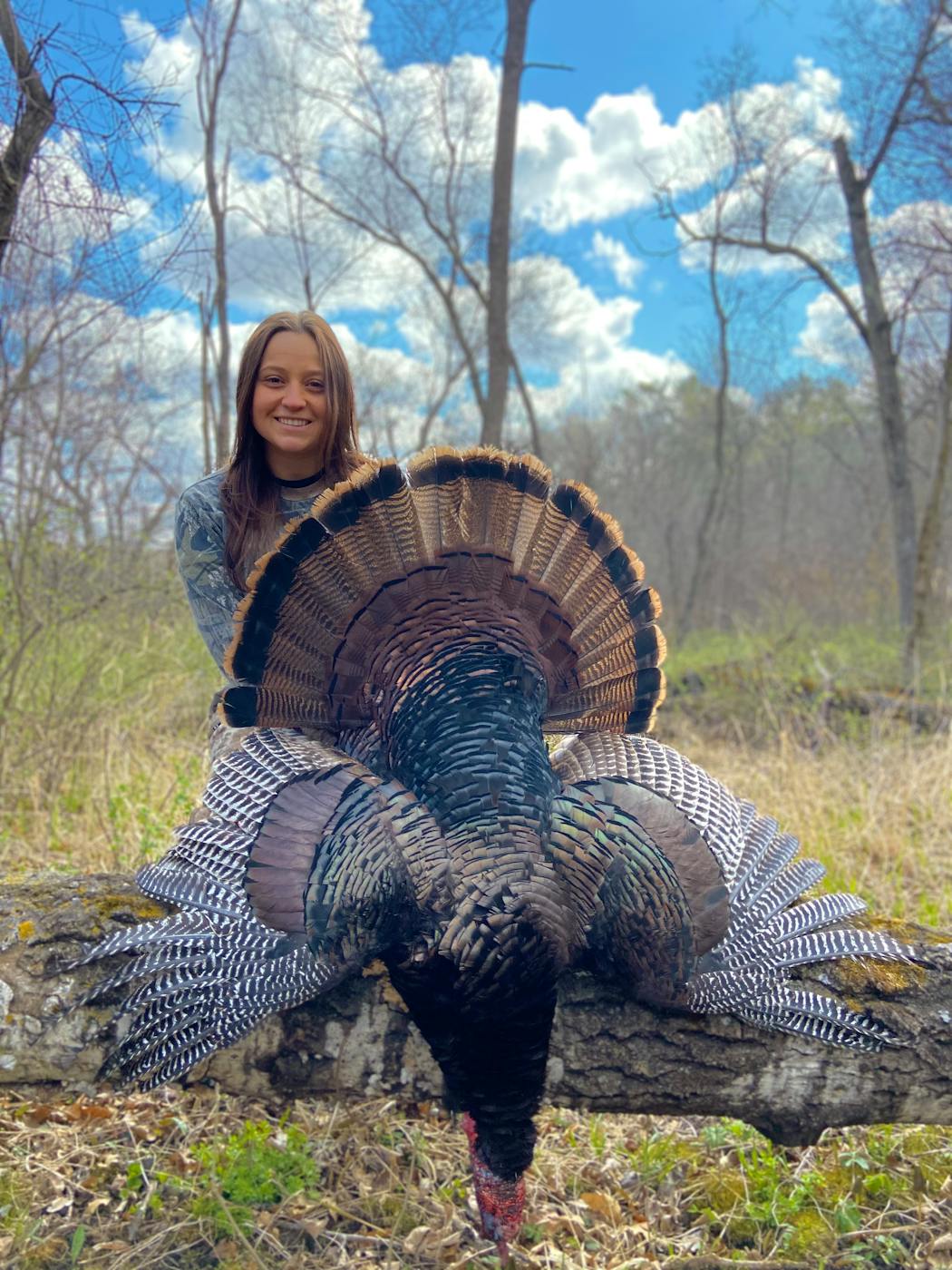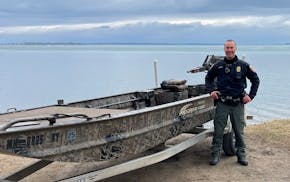Editor's note: Minnesota women are thriving in the outdoors across the state, through hunting, stewardship, work, and more. Today's story is the first in an occasional series this fall introducing some of them to Star Tribune readers.
At 24 years of age, Sophie Arhart is making her way in a field long dominated by men: wildlife management.
But she's paid her dues. While other college students might have spent summers traveling or lying on a beach, she chased spruce grouse, placed identification bands on ducks' legs and surveyed Minnesota's shallow lakes.
The payoff came recently when she was hired as a biologist working for Ducks Unlimited in Litchfield, Minn.
"Banding ducks was fun, but it was a lot of work," Arhart said. "My banding partner and I would get on the water in a johnboat about 7 in the evening with a spotlight and a net and we'd get done about 7 in the morning. Most nights we captured and banded about 40 ducks."
The bands help identify duck migration routes and waterfowl lifespans.
Growing up in an outdoor-oriented northern Minnesota family, Arhart is the daughter of Tony Arhart, a retired Department of Natural Resources conservation officer. Her mother, Barb, is an emergency room ward secretary in Bemidji.
With three older brothers and a younger sister, Arhart said there never was a thought in her family that only her brothers would learn about the outdoors, including how to fish and hunt, while she and her sister would wait at home with their mother.
Everyone participated equally, she said.
In fact, her mother is an archery hunter.
"It never occurred to me the outdoors was meant for men and not women," she said. "Everyone in my family enjoys it the same. We fish. We manage habitat. We hunt. The first time I shot a gun was when I was 5. My dad helped me hold it."
Nationally, the number of women hunters is increasing. Some estimates say as many as 20% of hunters are girls and women, perhaps double the rates of a couple of decades back.
Recently published research, in fact, indicates that historically, about as many women hunted as men, and not just small game but big game, as well.
At Bemidji State University, where Arhart studied wildlife biology and wetland ecology, most of her classmates were men.
"I was never intimidated by them," she said. "Sometimes I knew more than the guys did."
Her goal always was to find a permanent job in wildlife management, which is a competitive field and one in which women are a distinct minority.
Yet today, more women than ever are working in wildlife and related fields, and more are in positions of authority.
DNR Commissioner Sarah Strommen, for example, is the first woman to head that agency. The Interior Department is led by a Native American woman, Deb Haaland. And Martha Williams oversees the U.S. Fish and Wildlife Service.
Traditionally, most natural-resource job applicants — men and women — have had hunting and fishing backgrounds, and from these pastimes learned the importance of land, water and wildlife stewardship.
But as the nation has become more populous and urbanized, and conservation problems have multiplied, new disciplines such as ecology, environmental engineering and water law, among many others, have emerged, some of which attract applicants who neither hunt nor fish.
One advantage of the more traditional resource-occupation pathways was evident Saturday morning, as Sophie joined her dad and sister, Gracie, and the family's black lab, Ace, alongside a small southern Minnesota lake, on the season's first day.
Sophie dropped her first duck, a green-winged teal, when she was just a girl, and Saturday morning, a few teal were in the air as well, but not many. Most ducks that arrowed over the hunters' two dozen decoys were wood ducks.
"It was pretty quiet," Sophie said. "We didn't hear a lot of shooting."
Still, opener traditions were celebrated. Clambering into a canoe in the still dark of Saturday morning, the two sisters and their dad, together with Ace, paddled beneath a soft rain to their hunting spot. With them was the venison sausage that is their opening-morning staple, and riding along as well was optimism that a few ducks would be flying. Which there were, including, surprisingly, a flock of about 10 pintails that checked out the Arharts' decoys.
Greeting the surprise squadron, a volley of shots rang out, and a young sprig somersaulted to the lake surface, rounding out the morning's take, which included two woodies and a blue-winged teal.
Being with his daughters on the hunt, Tony Arhart had a satisfying opener — no matter the number of birds in their bag,
"As fewer people hunt, it's kind of scary," he offered. "Hunters pay for most wildlife management in this country, and I don't know how things will continue if fewer and fewer people buy licenses and go hunting. It was important to my wife and me to expose our kids and as many other kids as we could to the outdoors. You do that, and hopefully some of it sinks in."
Yet duck hunting can be physically demanding and equipment-intensive, and these, together with lost habitat and fewer ducks flying over Minnesota, account for the state's declining number of waterfowl hunters — from a peak of more than 120,000 a half-century ago to about 55,000 today.
"You don't just go duck hunting once, and say, 'This is for me,'" Tony said. "You have to make an effort."
The elder Arhart's reward for his effort Saturday? Instead of hunting for his children, as some parents might do on a given day, he hunted with them — a pleasant few hours of family time.
"With my dad being a conservation officer," Sophie said, "I did quite a few ride-alongs with him. I respect the law enforcement part of conservation. But I've always been drawn to the habitat side.
"Even when I was young, I climbed up and down ladders checking our wood duck boxes. I'd record how many ducks used the boxes and how many ducklings hatched. Then, when I banded ducks, I learned even more about them. Now, working for Ducks Unlimited, I'm managing their habitat, and trying to improve it.
"It's the most satisfying thing ever."
Anderson: Minnesota researcher roamed the Arctic with curious wolves unafraid

Anderson: DNR wants to cut Minnesota walleye limit to 4, but some want the idea thrown back

Anderson: It's time to get politics out of Minnesota conservation





